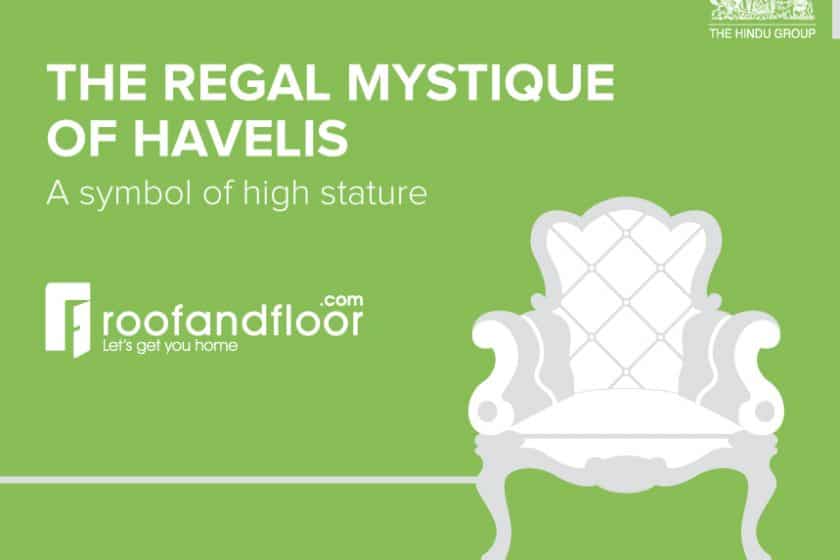The word ‘haveli’ instantly conjures up images of breath taking mansions inhabited by royalty. However, the word was initially used to refer to Vaishnava temples in Rajasthan and Gujarat. Individual mansions began to imitate the architectural styles of these temples and soon became the primary reference to the word haveli.
Considered a symbol of high stature, havelis were influenced by styles from central Asia, Islamic, Persian and Rajput architecture. The grandeur of each haveli differed depending on family wealth. Economic status dictated the materials and intricate designs that went into building havelis.
Design and components
Materials like fired bricks, sandstone, wood, marble, granite and plaster were some commonly used elements in construction of havelis. The most surprising aspect of these examples of gorgeous architecture was that the master masons who constructed them often did so without drawn-out plans! They let functional wisdom guide their construction.
Common characteristics
All havelis, however, facilitated certain common features. Havelis were built with a view to provide security and privacy. Their design also took into consideration the unforgiving heat and provided adequate ventilation. The mansions were designed such that it allowed residents to use various parts of the house during different times of the day – verandahs during cooler hours or well-shaded rooms for hotter hours.
Exploring the haveli
No two havelis were created exactly alike. Apart from some commonalities, they were guided largely by personal preferences and tastes as well as local art forms. What one could find consistently was the presence of the following spaces:
Courtyard – The courtyard was central to every haveli. As in other traditional homes, the courtyard facilitated good ventilation and allowed natural light to come through.
Zenana – This was a space restricted for women (usually a rear courtyard or a higher floor). These spaces also had high walls with jaalis (intricate openwork) which encouraged circulation but also kept the interiors hidden from view. The privacy was further aided by the addition of bamboo blinds and curtains.
Chowks – External courts were often used for a variety of purposes such as hosting functions or events. The grander the haveli, the more likely it was to have chowks to host elaborate events.
Reception spaces – Visitors were entertained in separate spaces dedicated for the same. Men and women had separate reception spaces. Chabutras were raised platforms used as waiting rooms.
Kitchens – The kitchens were not elaborate affairs – they were very often small rooms with grilled walls in place of chimneys.
Puja space – Havelis belonging to Hindus also had puja rooms for worship and a tulsi plant in the centre of the courtyard.
Considering that common sense was the guiding factor in the design of these havelis, furnishings reflected a similar line of thought. The bedding and rugs were often moveable so that they could be moved to the terrace when temperate weather prevailed. The effects of the baking heat were mitigated with the help of underground rooms, grass screens soaked in water, awnings as well as jharokhas which were essentially bay windows featuring jaalis to maximize ventilation.
Havelis often housed large joint families along with servants. The larger the mansion, the more family members it housed.
Your haveli-inspired home
You don’t need to have royal connections to have your home resemble a haveli. Some clever modifications keeping in mind your contemporary needs should do the trick. Some quick tips:
- Mughal elements like arched windows, jharokhas, jaalis and ornamentation are instantly reminiscent of a haveli’s regal beauty.
- Attention to details like frescoes, murals, inlays and artwork. Havelis are well-known for their elaborate designs.
- Consider a courtyard if space permits.
- Nothing spells grandeur like carved pillars. If installing one in your home is a possibility, go ahead and indulge
- Include intricately engraved dark wood furniture in your décor
- When furnishing, forget about minimalism. Chandeliers, rugs and other forms of opulent décor work perfectly in this context.
The appeal of old-world charm is forever. Draw inspiration from these beautiful constructions and watch your home transform into an elegant, sophisticated space.





